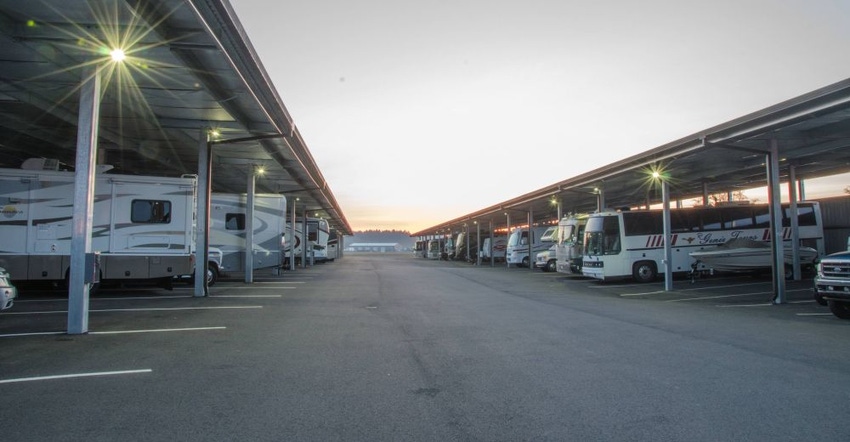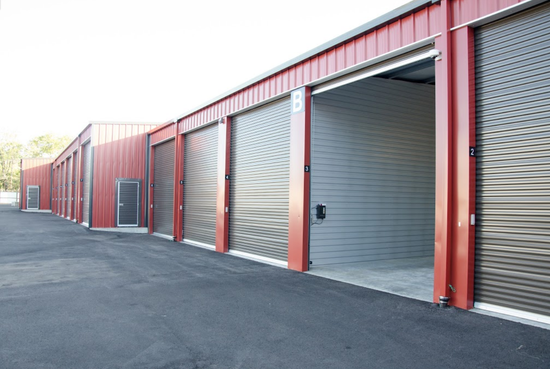The Decision to Develop Boat/RV Storage: Differences From Traditional Self-Storage
As markets saturate, some self-storage developers are turning their attention to the possibility of building or adding boat/RV storage. Learn the advantages of this business model and guiding principles for creating a successful site.

Over the last decade, boat/RV storage has been a driving force behind the growth of the self-storage industry. For years, it’s been one of the most researched topics by new developers looking to break into the business. One reason the product is attractive to potential investors is, in many cases, boat/RV storage is less susceptible to market saturation.
“We did not want to take on a high debt service for an area that is already saturated with self-storage. We wanted to allow the market to tell us what to build,” notes Wayne Frelund, president of Windham Developments Inc. and owner of 1st Avenue Storage in Greeley, Colo., which offers boat/RV storage in addition to self-storage, portable storage and offices. The operator will soon also offer man caves and executive storage, according to its website.
Different types of storage cater to different clientele. The major common thread between customers of boat/RV storage and traditional self-storage is the need for space and a willingness to pay for it. That said, there are also significant differences.
Apples to Oranges
People use self-storage to safeguard their prized possessions, which are often reminders of cherished memories. Boat/RV-storage tenants, on the other hand, rent space to store vehicles that connect them to America’s roads, lakes and national parks, allowing them to make new memories. In a sense, one type of storage preserves the past, while the other safeguards the future.
The differences don’t stop there. Years ago, someone described self-storage as a “crisis-based business,” which describes the raw truth. Tenants in the midst of a life catastrophe are a driving force in the self-storage business. Alternatively, boat/RV tenants entrust the operator with the metaphorical “key to their happiness.”
Boat/RV-storage renters also tend to rent for longer periods. On the flipside, they pay far less per square foot and take up a whole lot more land.
In a side-by-side analysis, given the same parcel with positive demand for both products, self-storage wins. It’s less land-intensive, generates a higher rent per square foot and can be less expensive to develop. The key words here, though, are “positive demand.” This is where boat/RV storage has a leg up.
Some developers have shied away from the boat/RV-storage concept because of its downside, but supply-and-demand considerations have developers re-examining its value as a standalone business. Because many homeowners’ associations limit residents’ ability to store recreational vehicles at their homes, property is becoming less expensive and consumer demand for these vehicles is getting stronger, boat/RV-storage development is grabbing attention.
The key to any successful storage project is to find the right parcel in the right market for the right price, and then build the right product. If you think boat/RV storage is right for you and your market, read on for things to consider.
Land Requirements
Boat/RV storage is more land-intensive than self-storage, so it’s natural to wonder how much space is needed to develop a project. Sadly, there’s no formula that works in all cases.
“For a facility to be profitable, a large site would need to be chosen—upward of seven to 10 acres—to be able to adequately support the cost of the facility vs. income generated,” explains Jo Beth White, a market-feasibility expert and president of Development Services Inc. “Land cost would be predicated on the income levels generated on the site; but in all instances, full lease-up should occur in 24 months, with breakeven occurring in the mid-14th to 16th months.”
A ratio of 50 percent coverage (which is good but not always possible) yields approximately 217,800 to 304,920 square feet under roof when built out. The average unit size for an enclosed RV unit is 14-by-40 feet or 560 square feet, according to Richard Curtin, an RV-industry analyst and director of consumer surveys at the University of Michigan. Personally, I recommend a mix of units ranging from 12 to 15 feet wide for boat/RV use.
Drive Aisles
One key reason boat/RV storage is so land-intensive is the necessity for wide drive aisles to accommodate the best and easiest unit access. Aisles of at least 50 to 55 feet wide are recommended when accessing spaces that are 40 feet deep. RVs and boats with trailers are difficult to maneuver. The more room you give tenants, the better their experience will be.
“The most underestimated item we experienced was how much unrentable property was needed to facilitate the wide drive aisles and turning radiuses of large vehicles,” recalls Jeff Jensen owner of North Plains RV and Storage in North Plains, Ore. “Also, do not make spaces too narrow. You are not renting to professional drivers who can park trailers without damaging others. The rentable yield is substantially reduced from standard self-storage.”

Enclosed boat/RV storage at Sentinel Self-Storage in Sherwood, Ore.
Costs and Timelines
It’s important to note that there are successful boat/RV storage facilities operating on smaller parcels across the nation. Industry averages use national statistics. A business plan that functions in South Florida may not necessarily equate to success in Bozeman, Mont. Developers should conduct a comprehensive cost vs. return-on-investment analysis to ensure they have a clear understanding of their market and the propensity to rent.
“Be prepared to underwrite this for several years, until you can reach stabilization,” notes Frelund. “It has taken us two-plus years to get to a point where we know the direction we are heading.”
Jensen also stresses the importance of understanding the full timeline a project entails. “The most surprising thing to me was how much longer everything takes with boat/RV storage,” he says. “Entitlement, financing, permitting, construction and rent-up all take longer than expected. The unexpected delays during each phase can push the whole process out. Do not expect that any time commitments, by any partners, will be met; and be ready to absorb additional costs [time and money] from these delays.”
Ultimately, market demand is a key driver to the success of any business, boat/RV storage included. Proper due diligence will help you assess how much you can afford to pay for a piece of dirt, based on the amount of rent per square foot of space and your anticipated construction costs.
Sarah Swingler is marketing coordinator at Carlsbad, Calif.-based Mako Steel Inc., which designs, supplies and installs steel buildings for the self-storage industry nationwide. For more information, call 800.383.4932; e-mail [email protected]; visit www.makosteel.com.
About the Author(s)
You May Also Like





